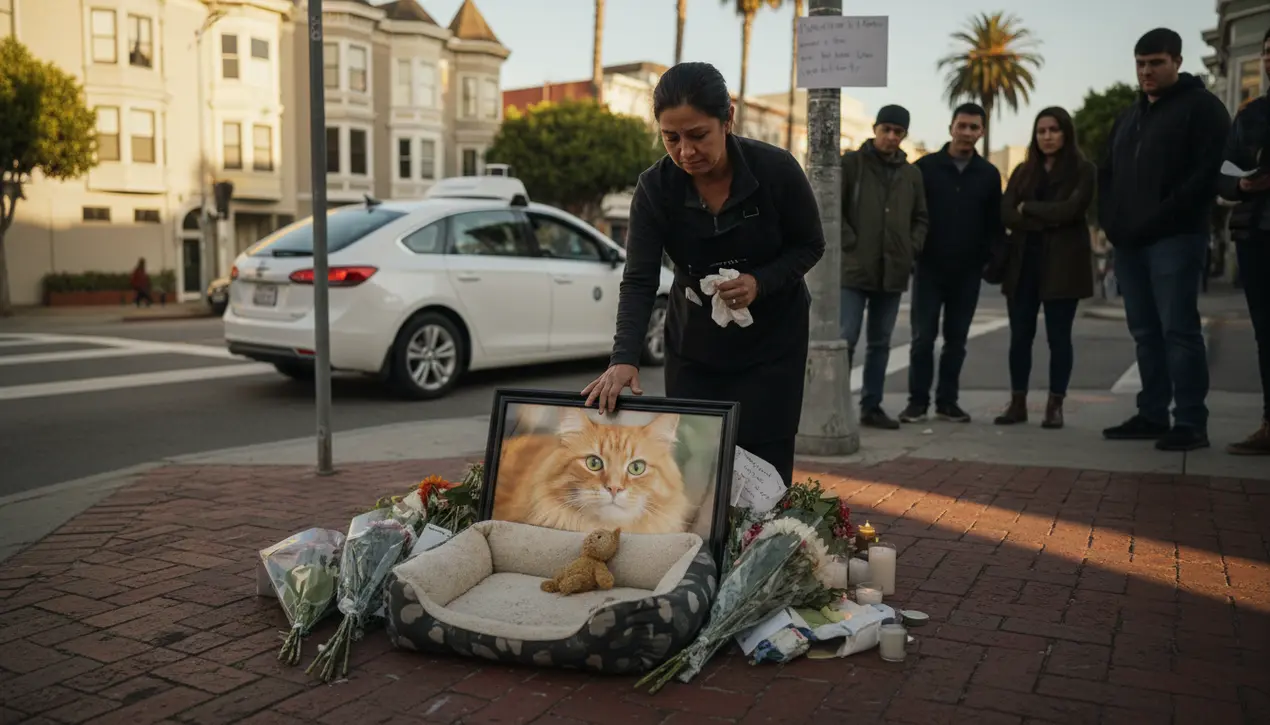
Otherauto & mobilityAutonomous Cars
Robotaxi Safety Debate After Beloved SF Cat's Death.
LA
Laura Bennett
5 hours ago7 min read3 comments
The Mission District’s vibrant, sun-drenched streets, usually humming with the easy rhythm of neighborhood life, fell into a collective hush last Tuesday. The catalyst wasn't a political protest or a market crash, but a smaller, more intimate tragedy: the death of Kit Kat, a beloved ginger bodega cat who had become a local institution.His life, ended abruptly by a driverless robotaxi, has ripped through the community's social fabric, transforming a single, heartbreaking incident into a profound referendum on our technological future. For years, Kit Kat wasn't just a pet; he was a fixture.He napped on sacks of dried beans at the corner store, accepted gentle scratches from toddlers, and served as a silent, purring confidant for regulars grabbing their morning coffee. His presence was a thread in the neighborhood's tapestry, a small, warm constant in a city changing at a dizzying pace.His death, therefore, feels profoundly personal, a violation of the unspoken contract of communal safety. It’s one thing to debate the statistical safety of autonomous vehicles in city council meetings; it’s another entirely to see a tangible, cherished life erased by one.The incident immediately cleaved the community. On one side are the tech advocates, who point to the cold, hard data: Waymo and Cruise reports highlighting millions of miles driven with fewer accidents than human drivers.They argue that sensors don’t get drowsy, don’t drive drunk, and don’t get distracted by text messages. For them, this is a tragic anomaly in a otherwise promising trajectory toward safer streets.Yet, this data-centric argument rings hollow to those mourning on Valencia Street. For Maria Gonzalez, the bodega owner for whom Kit Kat was both companion and mascot, the algorithms failed to perceive the soul of her store.'He wasn't a statistic,' she told me, her voice thick with grief. 'He was family.The car just… didn’t see him. How can you trust a machine that doesn’t understand what it is to be a part of a place?' This sentiment echoes a deeper, more philosophical anxiety gripping not just San Francisco, but every city on the cusp of this automation revolution.It’s the fear of the sanitized, the efficient, the emotionally illiterate future. A human driver might have recognized Kit Kat, known his habits, and instinctively slowed down.The AI, for all its laser-precise mapping, operated in a world devoid of context and meaning. It saw a small, moving obstacle, not a neighborhood’s heart.This incident forces us to ask not just if the technology is safe, but what kind of world we are building. Are we creating urban environments where algorithmic efficiency supersedes the messy, beautiful, and unpredictable nature of community life? The debate over Kit Kat is, in microcosm, the debate over the soul of our cities.It’s about whether our public spaces can accommodate both the relentless march of innovation and the quiet, purring presence of a cat in a sunbeam. The outcome will shape not just transportation policy, but the very character of human connection in the 21st century.
#Waymo
#robotaxi
#autonomous vehicles
#safety
#San Francisco
#accident
#public debate
#featured
Stay Informed. Act Smarter.
Get weekly highlights, major headlines, and expert insights — then put your knowledge to work in our live prediction markets.
Comments
Loading comments...
© 2025 Outpoll Service LTD. All rights reserved.